Indian Cobra aka Black, Spectacled, Pakistani Cobra
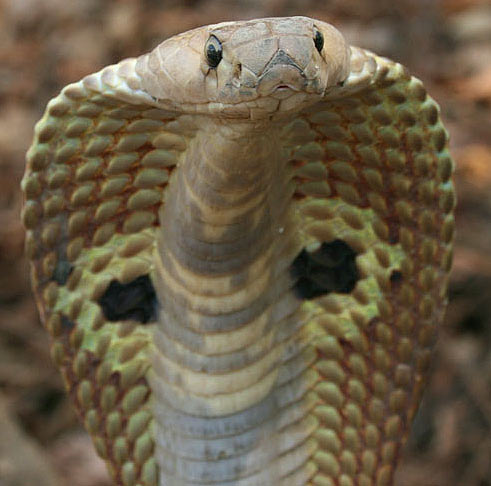
A native of India, and most of Asia, the Indian cobra (also known as the spectacled, black and Pakastani cobra) is considered to be one of the worlds deadliest creatures. With a length of 6 to 7.25 feet (1.8 - 2.2 meters), and its characteristic hood (made up of flexible neck ribs and loose skin), it wouldn't need much help frightening anyone you know, but it gets it anyway, in the form of a highly venomous bite, and its ability to spit venom over 6 feet (2 meters) away (it can force venom through its fangs by exerting muscular pressure on its venom glands). The Indian cobra resorts to these attacks after taking its well known threat posture; in which it flares its hood (which also has markings that resemble “sinister” eyes) and raises the front third of its body length.
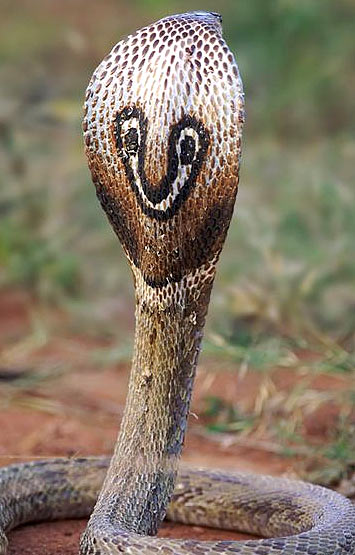
The Indian cobra preys mostly on rodents, lizards, and frogs, but that doesn't stop it from biting the unfortunate humans who happen to cross paths with it. It is considered one of the “big four” in regards to being one of the top four species in the number of humans bitten per year. Its venom contains a very powerful post-synaptic neurotoxin that temporarily paralyzes the muscles of the bitten, with more severe bites leading to respiratory failure or cardiac arrest in human victims.
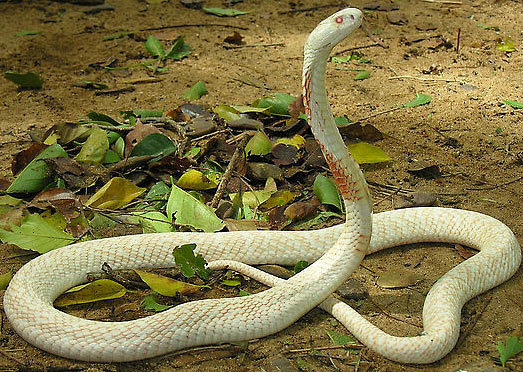
Albino
Indian cobras are very protective of their eggs, with females guarding the clutch of 8 to 45 eggs all day and night except for her own feeding time.
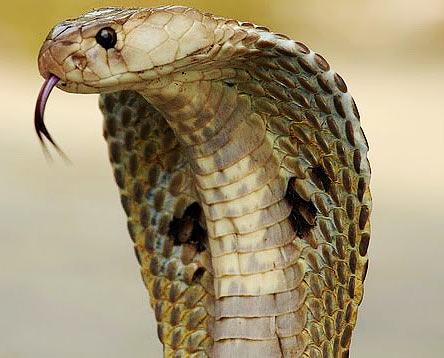
The handsome hooded reptiles have become common in popular culture because of the age-old practice of “snake charming”; in which a performer with a flute coaxes the snake from a basket using his music. In actuality, the Indian cobra is deaf to the sound of the flute and is instead following the visual motion of the flute itself and feeling vibrations in the ground from the charmer's foot tapping.
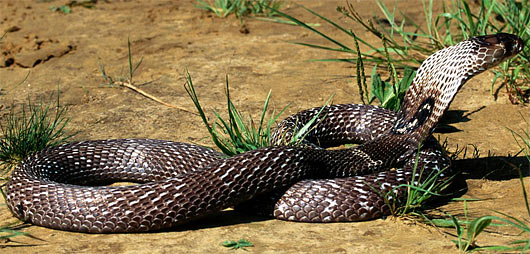
Indian cobras were once killed for their venom and during staged fights with mongooses (their natural predator). However, they are now protected by Indian Wildlife Protection Act of 1972, and are safe from such practices. Due to this protection, and their own self-defense mechanisms and habits, their population has stabilized. These guys will be around to bite us for years to come.
No comments:
Post a Comment